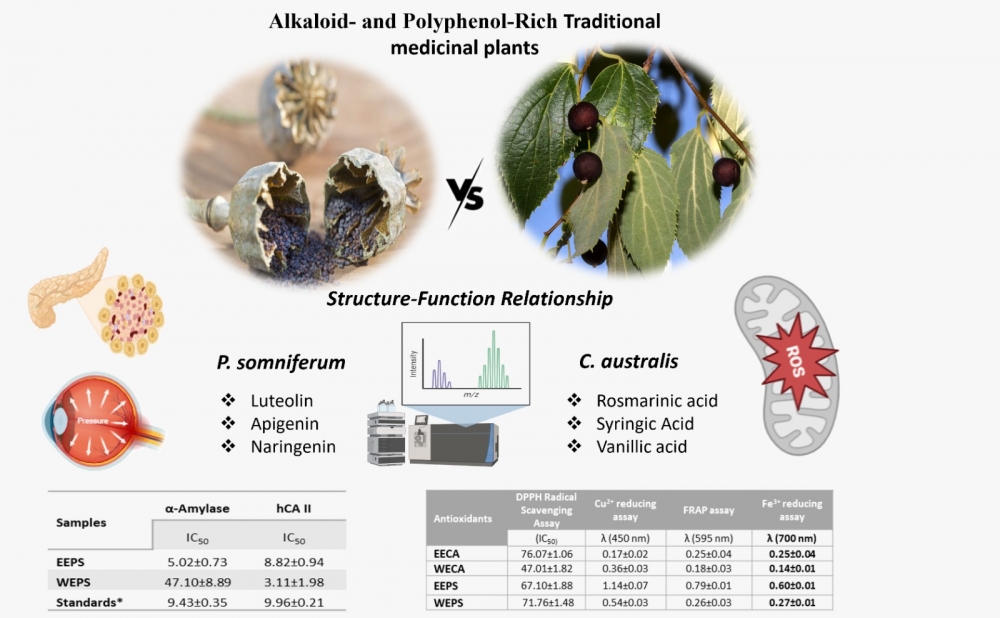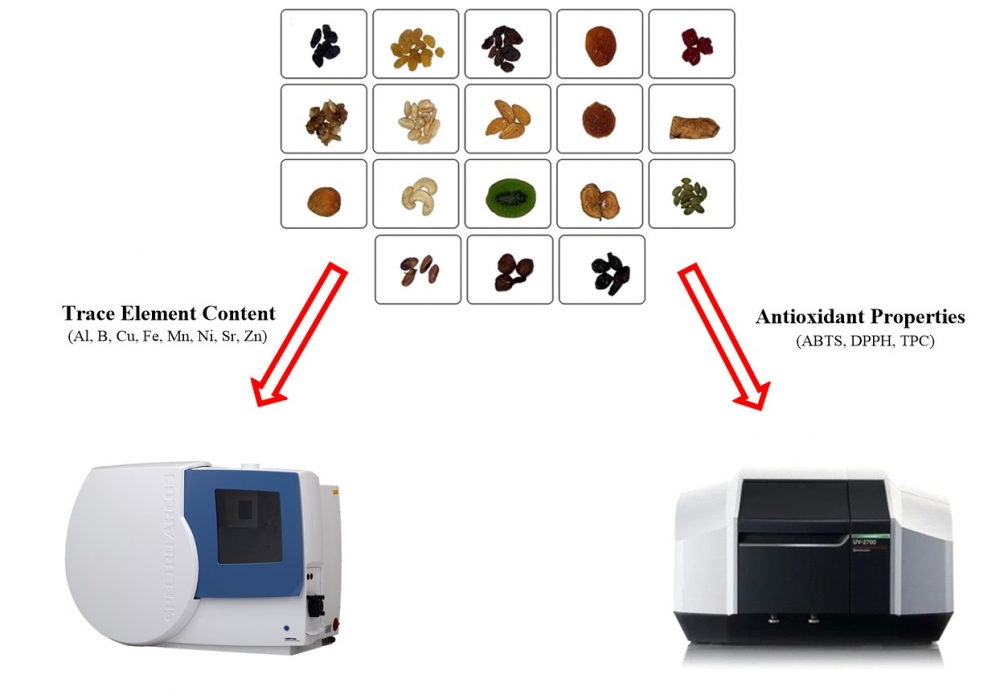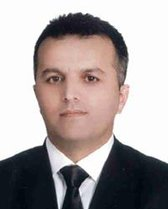Journal of Chemical Metrology
A scientific open access journal in the field of analytical chemistry and accreditationLATEST ARTICLES
Contrasting alkaloid and polyphenol-rich plants: LC-MS/MS based characterization and bioactivity assessment of Papaver somniferum and Celtis australis

This study involves a comparative evaluation of Papaver somniferum L. (Papaveraceae) and Celtis australis L. (Cannabaceae), two phytochemically different medicinal plants from Türkiye, by focusing on their phenolic content, antioxidant capacity, and enzyme inhibition properties. Ethanolic and aqueous extracts of both plants were analyzed by LC–MS/MS, and the results revealed different secondary metabolites. P. somniferum was determined to be rich in terms of flavonoids, including luteolin, apigenin, and naringenin. Meanwhile, C. australis was found to be rich in terms of phenolic acids, including rosmarinic, syringic, vanillic, and chlorogenic acids. Antioxidant evaluation through ABTS radical scavenging, CUPRAC, FRAP, and Fe³⁺-reducing assays showed that the aqueous extract of C. australis (WECA) exhibited significant radical scavenging capacity; on the other hand, the ethanolic extract of P. somniferum (EEPS) possessed stronger reducing power, which was evaluated as consistent with their respective phenolic compositions determined by LC-MS/MS analysis. Enzyme inhibition assays of both extracts demonstrated potent α-amylase inhibition by EEPS with an IC50: 5.02±0.73 µg/mL, suggesting potential antidiabetic effects, and remarkable human carbonic anhydrase II (hCA II) inhibition by P. somniferum water extract with IC50: 3.11±1.98 µg/mL, outperforming the standard inhibitor. Both plants also showed moderate anticholinergic effect, indicating a possible neuroprotective property. In conclusion, while the flavonoid-rich P. somniferum showed excellent reducing ability and potent inhibition of key metabolic enzymes, including α-amylase, AChE, and hCA II, the phenolic acid–dominant C. australis exhibited a stronger radical scavenging efficiency, reflecting distinct yet complementary antioxidant and therapeutic potentials that may be harnessed for functional or pharmacological applications.
DOI http://doi.org/10.25135/jcm.125.2510.3703 Keywords Papaver somniferum Celtis australis LC-MS/MS antioxidant activity enzyme inhibition Available online: December 07, 2025 DETAILS DOWNLOAD PDF © ACG Publications. All rights reserved.Optimization of luteolin derivative extraction conditions of Avicennia officinalis L. leaf extract

Avicennia officinalis L. is a medium-sized evergreen mangrove shrub belonging to the Acanthaceae family. The leaves of this plant are widely used in traditional medicine across Asia. Recently, demand for this herb and its extracts has increased, particularly for herbal product development. This study aimed to optimize the ultrasound-assisted extraction (UAE) of A. officinalis leaves and quantify luteolin-7-O-glucuronide (L7Gn) and luteolin-7-O-rutinoside (L7R) using high-performance liquid chromatography (HPLC). The optimal UAE conditions were a liquid-to-solid ratio of 10:1, extraction with 50% ethanol for 20.4 minutes, as determined by the Box–Behnken design. Under these conditions, the extract contained 124.65 mg of L7Gn and 67.22 mg of L7R per 100 g of dried leaf powder. These optimized parameters were used to validate the quantification method. Bioactive compounds from the A. officinalis leaf extract were identified by ultra-fast liquid chromatography coupled with a diode array detector. The method was then applied to quantify L7Gn and L7R in leaf samples collected from Ngoc Hien District, Ca Mau Province, Vietnam. The ethanol extracts contained L7Gn levels ranging from 2.50 to 2.91 mg/g and L7R levels ranging from 1.58 to 1.73 mg/g. This is the first study to quantify L7Gn and L7R in A. officinalis leaves. The findings provide initial scientific evidence and establish a foundation for further research on this species.
DOI http://doi.org/10.25135/jcm.124.2509.339 Keywords Avicennia officinalis L. luteolin-7-O-glucuronide luteolin-7-O-rutinoside optimization ultrasound-assisted extraction (UAE) Available online: November 30, 2025 DETAILS DOWNLOAD PDF © ACG Publications. All rights reserved.Determination of sulfur in topical formulations by GC-MS

A simple, sensitive, and validated gas chromatography–mass spectrometry (GC–MS) method was developed for the quantitative determination of sulfur in topical formulations. The separation was achieved on a TR-5MS capillary column (30 m × 0.25 mm ID, 0.25 µm film thickness) using helium as the carrier gas at a flow rate of 1 mL/min. The oven temperature was maintained at 190 °C, and the total analysis time was 13 min. Detection was performed in selective ion monitoring (SIM) mode at m/z 64. The injection volume was 1 µL. The method exhibited excellent linearity within the concentration range of 0.75–15.00 µg/mL. The lower limit of detection (LOD) and quantification (LOQ) were found to be 0.25 µg/mL and 0.75 µg/mL, respectively. Mean recovery values ranged from 98% to 102%, with intra- and inter-day precisions (RSD) not exceeding 2%. Method validation was conducted in accordance with the ICH Q2(R1) guidelines. Furthermore, measurement uncertainty was evaluated following the EURACHEM approach. The validated method was successfully applied to the determination of sulfur in commercial topical formulations, demonstrating its suitability for routine quality control analysis.
DOI http://doi.org/10.25135/jcm.123.2510.3664 Keywords Sulfur topical formulations method validation GC-MS uncertainty assessment. Available online: November 22, 2025 DETAILS DOWNLOAD PDF © ACG Publications. All rights reserved.An extensive analysis of trace element content and antioxidant properties of nuts and dried fruits

This study examined the microelement composition and antioxidant activity of nuts and dried fruits that included soya raisin, golden raisin, malayar raisin, dried apricot, dried prune, walnut, peanut, almond, dried mango, dried melon, apricot with stone, cashew, dried kiwi, dried apple, pumpkin seed, pistachio, hazelnut, and rosehip. Ethanol infusions were assessed using the DPPH and ABTS methods to evaluate their ability to eliminate radicals and determine total phenolic content. Among the tested samples, hazelnuts displayed the lowest antioxidant content alongside high toxicity levels, while cashews exhibited the weakest reactivity. To ascertain the trace element content, the samples underwent processing in microwave ovens, and concentrations of various components were measured using Inductively Coupled Plasma Optical Emission Spectroscopy (ICP-OES). The method's accuracy was further validated using a certified sample material (NIST SRM 1515, apple leaves). The concentrations observed in the samples varied as follows: Al: 4.7–172.1 mg/kg, B: 3.3–50 mg/kg, Cu: 5.6–52.6 mg/kg, Fe: 14.1–145.4 mg/kg, Mn: 0.3–51.3 mg/kg, Ni: 1.5–8.7 mg/kg, Sr: 1.75–78.5 mg/kg, and Zn: 5.8–63.9 mg/kg, and the findings were compared with existing literature on similar matrices. Overall, the results underscore the nutritional significance of hazelnuts and dried grapes as natural antioxidant sources, raise concerns about potential health risks associated with potentially toxic metal accumulation, and emphasize the necessity for ongoing analyses to ensure consumer safety. The novelty of this study lies in its analysis of both antioxidants and minerals found in nuts and dried fruits from Kazakhstan, which are significant in everyday diets, festive events, and traditional medicine.
DOI http://doi.org/10.25135/jcm.122.2509.3632 Keywords ICP-OES nuts dried fruits antioxidant capacity trace element Available online: October 29, 2025 DETAILS DOWNLOAD PDF © ACG Publications. All rights reserved.